LinkedIn is and remains an important platform for companies to reach specific target groups. The platform is unique because it collects information about the professional status of users (job title, sector, publications, experience, employer, ...). You can address your target group in different ways: organically (non-paid) or sponsored (paid). But what is the difference between the two? And is worth spending the budget on a sponsored post?
What determines the reach of my post?
On LinkedIn you can try to reach people organically (for free). You prepare a message and then you post it on the platform. LinkedIn's algorithm then determines the size of your reach. This is done on the basis of a number of factors:
- Number of connections (the more connections you have, the greater your reach – keep in mind that not all your connections will see your post)
- The relevance of the post (which connections might your post be of interest to?)
- The expected engagement (the number of expected clicks, likes, shares and reactions)
How can I increase my (organic) reach?
If you choose to post organically, and not use the paid feature, there are a few tricks you can use to increase your reach:
- Don't link to other websites in your post. Third-party links are punished by LinkedIn because they want to keep users on their own platform as much as possible.
- Don't use more than nine hashtags – more than this is considered spam.
- If possible, leave four hours between your posts, otherwise LinkedIn splits the reach across your posts.
- Finally, respond to comments as much as possible to increase engagement and use different types of posts such as polls, carousels or videos.
Curious to see how
we put this into practice?
In this case we developed a LinkedIn strategy for one of our customers who wanted to promote the launch of a new division targeted to the high-rise building market.

Does it pay to sponsor my post?
You can also increase the reach of your posts by using the paid feature. In this case there are two options: boosting and advertising.
The boost feature is quite simple, but rather limited in functionality.
Advertising campaigns are a bit more complex, but also give you more options. For example, unlike with the boost function, with the advertising option you can still edit your post afterwards. Experienced users are advised to advertise instead of using the boost function.
Sponsoring your post is a must when you do not (yet) have many followers or connections, because in that case the organic reach of your post will be limited. Sponsoring ensures that your post reaches enough people and has some impact.
Even if you have already built up an extensive follower base, it can be interesting to attract regular paying traffic. A campaign on LinkedIn allows you to build a profile of your ideal prospect and reach them with your post.
In this case, choose the post that you use as an advertisement carefully. A post that is too general is less interesting, so it is better to choose a targeted post that highlights your USPs (unique selling propositions) to a specific target group.
In summary, the first thing to do is optimize your organic reach as much as possible. In addition, sponsored content can help build a follower base quickly. This way your next posts get the organic attention they deserve. Even for those who have been active on LinkedIn for a while, paid traffic can open the door to promising prospects. Good luck!
At Living Stone, we focus on today's marketing trends and tomorrow's developments. If you would like to talk to us about your marketing goals, and how you can achieve your objectives in this changing landscape, please contact Anne-Mie at anne-mie.vansteelant@livingstone.eu or call +32 (0)55 59 10 07.




